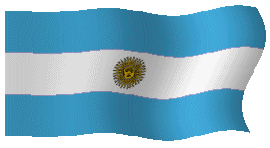
B"H
Jewish  Tours
Tours
 Buenos Aires, Argentina
Buenos Aires, Argentina
SANTA FE, the first and one of the most important provinces in Argentina, opened for the agricultural settlement of immigrants; capital city of the province.
Jewish population above five years of age, according to the
1960 census, was 14,152 out of a total of 1,865,537. In 2005 it was
The disintegration of agricultural settlements brought about the creation of Jewish communities in many towns and villages in the province. A survey conducted in 1943 by ICA found 21,833 Jews in the province, of whom only 2,956 lived on the agricultural settlements; 17,422 lived in 11 cities and towns; and another 1,455 lived in 112 villages and hamlets. In the following years, because of increased migration from rural to urban areas, there was a sharp decline in the number of areas with Jewish population, as well as in the number of Jews in the rural areas generally. In 1964, 12 cities and towns had organized Jewish communities affiliated with the Va'ad ha-Kehillot, the principal ones being Rosario (in 2005 with some 1,600 families), Rafaela, Moisésville, Ceres, Palacios, San Cristóbal, and the capital city, Santa Fe.
The first Jews to reach the city of Santa Fe were immigrants who arrived from Eastern Europe and Morocco in 1888–89. The first communal organization was the Sociedad Israelita Latina del Cementerio, established by Moroccan Jews in 1895. The Ashkenazi Sociedad Unión Israelita de Socorros was founded in 1906. In 1909 there were 547 Jews in the city, most of whom were small businessmen and laborers. By 1943 the Jewish community had increased to an estimated 4,000, of whom 3,600 were Ashkenazim and the rest Sephardim from Morocco, Turkey, and Syria. At that time the Ashkenazim maintained their own ḥevra kaddisha which constituted the central communal institution, and over whose control a conflict ensued between the Zionist Sociedad Unión Israelita Sionista and the "progressive" (pro-Communist) Sociedad Cultural I.L. Peretz. Both groups, however, were subsidized by the ḥevra kaddisha, conducted separate cultural activities, and maintained their own schools. In later years, the ḥevra kaddisha became the Comunidad Israelita, with a membership of 742 families in 1969 that declined to 600 in 2005. In June 2005 the Comunidad Israelita, within the framework of the commemoration of its centenary, inaugurated a Jewish museum – Museo Judío de Santa Fe "Hinenu." The community life of the Sephardim continued to center on the common cemetery. Despite the fact that the Sephardim had formed separate synagogues according to countries of origin, in the 1950s, they established a common congregation, Sociedad Hebrea Sefaradí de Socorros Mutuos.
In addition to several welfare and women's organizations, three important financial bodies were established in Santa Fe: two credit cooperatives and a commercial cooperative founded by peddlers. In 1970 the Jewish institutions in Santa Fe comprised two Ashkenazi synagogues – one of them Conservative, one Sephardi synagogue, a shoḥet, a mikveh, the Club Israelita Macabi, and three Jewish credit institutions. The Ḥ.N. Bialik Jewish kindergarten and day school had in the 1970s an enrollment of 144 pupils. In the early 21st century there was also a Zionist youth movement, Macabi Ẓa'ir, connected with He-Ḥalutz la-Merḥav. The city's branch of *DAIA is the umbrella organization for all groups except the pro-Communists.
[Daniel Benito Rubinstein Novick]
Source: Encyclopaedia Judaica. © 2008 The Gale Group. All Rights Reserved.
|
Visite nuestro sitio/Visit our home page: |